Q
How much is a brand new Honda Civic Type R?
The all-new Honda Civic Type R is currently priced between approximately RM330,000 and RM350,000 in Malaysia. Exact figures might vary depending on optional extras or ongoing promotions. This high-performance front-wheel-drive hot hatch packs a 2.0-liter VTEC turbocharged engine, churning out 315 horsepower and 420 Nm of torque, mated to a slick 6-speed manual gearbox. It sprints from 0-100km/h in just 5.7 seconds.
What really stands out is Honda's latest track-tuned tech on board, including adaptive dampers and a limited-slip differential, making it a blast to drive whether you're tackling Malaysia's twisty mountain roads or hitting the race track. For driving enthusiasts who crave that extra edge, there's even a +R driving mode that sharpens throttle response and tightens up steering feedback.
Since it's a fully imported (CBU) model, you can expect to pay quite a bit more compared to the locally assembled standard Civic. But when you factor in its authentic Type R heritage and limited availability, it still represents solid value in the performance car market. If you're interested, I'd recommend reaching out directly to Honda Malaysia's authorized dealers to get the latest pricing and schedule a test drive—these high-performance models tend to fly off the shelves, so stock might be pretty limited.
Special Disclaimer: This content is published by users and does not represent the views or position of PCauto.
Related Q&A
Q
What Segment Does Honda Civic Belong to?
The Honda Civic belongs to the C-Segment, which is in the compact car category. Compact cars typically have a body length ranging from 4.2 to 4.6 meters, focusing on being price - friendly, fuel - efficient, and convenient for daily use, with a design that balances practicality and driving pleasure.
The Honda Civic has a body length of about 4.6 meters. This size ensures ample interior space and handling flexibility. It offers a variety of power options, from naturally - aspirated to turbocharged engines, which can meet the needs of different consumers. The body design emphasizes aerodynamics and a modern look. With a young and stylish appearance, it's suitable for urban commuting and family trips. In the market, the Civic's direct competitors usually include other compact cars in the same class, such as the Toyota Corolla, Volkswagen Golf, Mazda 3, and Hyundai Elantra.
Q
What Is the Reslae Value of Honda Civic?
The Honda Civic maintains strong resale value in the used car market, consistently ranking among the best-retaining Japanese sedans in its class , particularly the newer tenth-generation (FC) and eleventh-generation (FK) models. Industry data shows Civic typically depreciates only 20%-30% over the first three years (depending on condition, mileage and market demand). For example, a 2020 Civic 1.5 TC originally priced around RM130k can still be priced at RM90k-RM100k in today's used market (varying by trim and maintenance history).
This exceptional value retention benefits from Honda's brand reputation, the appeal of its turbocharged engine (1.5L VTEC Turbo), and relatively low maintenance costs - though the base 1.8L naturally aspirated versions fetch slightly lower (yet still competitive) prices. Generally, low-mileage examples (under 15,000km annually) with complete service records and accident-free history are the most popular, while higher trims with Honda Sensing (like 1.5 TC-P) command premium resale prices over standard versions.
Additional factors affecting resale value include: preferred colors (white/gray being most popular), remaining factory warranty coverage, and aftermarket modifications (which may actually decrease value). Owners are advised to maintain regular authorized service center visits and keep complete documentation to maximize future resale potential.
Q
What's the Engine Displacement of Honda Civic?
The Honda Civic provides a variety of models with different displacements. The common displacements are 1.5L and 2.0L. When converted to CC (cubic centimeter, where 1L = 1000CC), they correspond to 1498CC and 1993CC respectively. The 1.5L models generally adopt the turbo - charged intake form, offering a fairly abundant power output, which can meet the needs of daily driving and some scenarios with certain power requirements. The 2.0L e:HEV RS model, on the other hand, is a gasoline - electric hybrid (HEV). It combines the advantages of the engine and the electric motor. While providing good power, it also boasts excellent fuel economy. Each model with different displacements has its own characteristics, and consumers can make a choice based on their own needs and preferences.
Q
What Engine Is Equipped by Honda Civic?
The Honda Civic offers multiple engine configurations. A common option is the 1.5L Turbo engine, featuring turbocharged intake with a displacement of 1498mL. It delivers a maximum horsepower of 182PS (134kW) at 6000rpm and peak torque of 240N·m between 1700-4500rpm. This inline-4 cylinder engine adopts an L-type cylinder arrangement.
Another available configuration is the 2.0L e:HEV RS, which utilizes naturally aspirated (NA) intake with a 1993mL displacement. The combustion engine produces 143PS (105kW) at 6000rpm and 189N·m of torque at 4500rpm. Combined with its electric motor, the hybrid system generates an additional 184PS (135kW) and 315N·m of torque.
These different engine options cater to varying consumer needs and driving preferences. The 1.5L Turbo provides robust power output, appealing to performance-oriented drivers, while the 2.0L e:HEV RS hybrid configuration balances adequate power delivery with superior fuel efficiency.
Q
What Is the Gearbox Type of Honda Civic?
The gearbox types of the Honda Civic vary depending on the model and year. Common transmission types include Continuously Variable Transmission (CVT) and Electronically Controlled Continuously Variable Transmission (E - CVT).
For gasoline - powered Honda Civic models, such as the 2025 Honda Civic 1.5L E, 1.5L V, and 1.5L RS, they are equipped with CVT. This type of transmission can provide a smooth driving experience and help optimize fuel efficiency. Unlike traditional transmissions, CVT doesn't have distinct gears and can achieve seamless changes in the transmission ratio according to driving conditions.
The 2025 Honda Civic 2.0L e:HEV RS is a gasoline - hybrid model, which uses E - CVT. This is specifically designed for hybrid vehicles. It combines the power of the engine and the electric motor, further improving fuel economy and providing a refined driving experience. The E - CVT manages the power distribution between the two power sources to ensure efficient operation in different driving scenarios.
Q
What Is the Pitch Circle Diameter of Honda Civic?
PCD (Pitch Circle Diameter) refers to the diameter of the central circle of the bolt holes in an automobile wheel hub. The PCD sizes of Honda Civic vary across different years and versions. Although the PCD dimensions may vary across different model years and versions of the Honda Civic, the given information does not explicitly specify the PCD. However, based on common wheel bolt-hole references for models like the 2022–2025 Civic, which have various tire sizes (e.g., 215/55 R16, 215/50 R17, 235/40 ZR18), the PCD in the Malaysian automotive market is typically 5x114.3mm—a widely compatible size.
For precise measurements, it is recommended to consult Honda authorized dealers or professional automotive workshops, as they can provide accurate PCD specifications for specific vehicle models.
Q
Is Honda Civic Equipped with Apple Carplay?
The currently available 11th-generation Honda Civic (Honda Civic 2023 FK) comes standard with Apple CarPlay wireless connectivity across the whole range (wired connection may also be retained in some models). Paired with a 9 - inch high - definition touchscreen, it seamlessly integrates navigation, music, and call operations for iPhone users.
As for the previous 10th - generation Civic (FC models), the mid - cycle facelift versions after 2019 (some 1.5 TC/TC - P models) also started to introduce Apple CarPlay. However, it should be noted that the early FC versions from 2016 - 2018 only support the Honda original system. If you want CarPlay, you may need to install a third - party module by yourself.
It is recommended that before buying a car, you confirm whether the function is available through the "Smartphone Connection" icon in the upper - right corner of the in - car screen or check the voice command button (with a microphone icon) on the steering wheel. If you're buying a used car, you can ask to test the compatibility by connecting your phone.
In addition, Honda Malaysia has been actively upgrading the in - car system in recent years. The new - generation Civic supports wireless Android Auto and maintains stable compatibility with the iOS system (it is recommended to use iOS 14 or later). In the future, system updates may further optimize the connection stability and response speed.
Q
What Is the Brand of Honda Civic's Tire?
The original - equipped tire brands adopted by the Honda Civic vary depending on different model years, vehicle types, and regional dealerships. Commonly, they include Michelin (such as Primacy 4 or Pilot Sport 4), Yokohama (like Advan dB or BluEarth - GT), and Bridgestone (Turanza T005A). These tires are characterized by their quietness, wear resistance, and wet - grip performance, which align with Honda's positioning for the Civic's well - balanced performance.
For example, the high - end 1.5 TC - P model might come with the higher - performance Michelin Pilot Sport series, while the entry - level 1.8S could be paired with more economy - oriented Yokohama tires. It's recommended that owners check the markings on the tire sidewall to confirm the specific model (e.g., 215/50 R17).
In addition, vehicles from different batches may have their tire brands changed due to supply - chain adjustments. If owners have higher requirements for the performance of the original tires, they can consult the authorized service center during maintenance or upgrade the tires on their own (such as choosing Continental or Goodyear). However, it's important to note that the tire size and load index must match the original specifications (most FK5 - generation models use 215/50 R17 or 235/40 R18) to ensure driving safety and maintain warranty rights.
Q
Is Honda Civic a Good Car? Learn the Pros and Cons Here
The Honda Civic is generally regarded as a good car with both advantages and disadvantages. Regarding its advantages, it has good performance. Some models are equipped with turbocharged engines, which can offer a pleasant acceleration experience. For example, the models equipped with a 1.5 - liter turbocharged engine can reach a maximum speed of 200 kilometers per hour. Its fuel economy is also quite good. The official combined fuel consumption of some models is about 6 liters per 100 kilometers, which helps to save the usage cost.
In terms of handling, the Civic benefits from its well - tuned suspension. The combination of the MacPherson front suspension and the multi - link rear suspension can provide a stable driving and riding experience and sensitive handling performance whether on city streets or highways. Safety performance is also one of its highlights. It comes standard with a series of safety features, such as multiple airbags, Anti - lock Braking System (ABS), and Electronic Stability Control, making you feel more secure on the road. The interior design is user - friendly, and the overall workmanship quality is usually reliable.
However, it also has some drawbacks. Some drivers may find the noise level, especially the road noise and wind noise at high speeds, a bit annoying. The rear - seat space may seem a bit cramped for taller passengers. In addition, compared with some competitors, its price may be relatively high. But overall, if you value performance, safety, and handling more than an absolutely quiet interior environment and the largest rear - seat space, then the Honda Civic is a good choice.
Q
What Is the Width of Honda Civic?
The width of the Honda Civic varies depending on different models and generations. Generally speaking, for the models listed here, the Honda Civic has a width of 1,802 millimeters. This dimension affects the vehicle's overall footprint on the road, affecting stability while driving, the space it takes up in parking lots and so on. It also has an impact on the interior space available to passengers. The wider the body, the more shoulder and elbow room passengers may have. Keep in mind that these dimensions may vary for newer or different versions of the Honda Civic.
Latest Q&A
Q
jaecoo j7 how many seater
The Jaecoo J7 is a luxury compact SUV with a 5-seat layout, perfect for Malaysian families or anyone after a comfy ride. As a fresh face in the segment, the J7 prioritizes practicality in its space design – the rear seats fold down in sections, letting you flexibly expand the boot space to handle daily errands or short getaways. Malaysian buyers will probably be drawn to its features, too – think smart infotainment, advanced driver assists, and an air-con system that’s built to handle our tropical heat. Under the hood, we’re expecting engine options that balance fuel efficiency with solid performance, ideal for Malaysia’s mixed bag of road conditions. If you’re in the market for an SUV, besides just the seat count, keep an eye on safety ratings, warranty coverage, and how good the local after-sales network is – all these play a big part in how happy you’ll be with the car long-term. It’s worth noting that SUV demand in Malaysia just keeps growing, and 5-seaters are a hit for city driving and family use thanks to their flexibility and better fuel economy.
Q
jaecoo j7 from which country
The Jaecoo J7 is a compact SUV from Jaecoo, an emerging sub-brand under China's Chery Group. It's all about youthful design and an urban off-road vibe, developed and built using Chery's existing tech infrastructure. Under the hood, you'll find a 1.6T turbocharged engine paired with a 7-speed dual-clutch transmission, and it even comes with four-wheel drive. The suspension is tuned to balance on-road comfort with light off-roading capabilities. Inside, there's a sleek dual-screen setup with smart connectivity features.
For the Malaysian market, Jaecoo, being the new kid on the block, is gradually setting up its sales network through local partners. The right-hand-drive version of the J7 has already secured Vehicle Type Approval (VOC) in Malaysia and is expected to be imported as a Completely Built-Up (CBU) unit. Pricing is likely to target the mid-range SUV segment, positioning it to go head-to-head with the likes of the Honda HR-V and Toyota Corolla Cross.
It's worth noting that Chery Group has been ramping up efforts in Southeast Asia in recent years. Their Omoda and Tiggo series have already built up a decent reputation in Malaysia. Jaecoo, however, is focusing on rapid product iteration through modular platform technology, a strategy that should help shorten the time it takes to bring new models to market.
Malaysian consumers eyeing the J7 should keep an eye out for official local spec releases. Key points to watch will be the air-conditioning system and anti-rust treatments, which should be optimized for the tropical climate, as well as suspension settings tailored to local road conditions.
Q
how much is a mercedes e300
In Malaysia, the price of a Mercedes-Benz E300 can vary depending on the model year, configuration options, and whether it's a brand-new or pre-owned vehicle. Right now, the starting price for a brand-new E300 typically falls between RM 400,000 and RM 500,000. That said, the exact figure might shift based on selected add-ons, ongoing promotions, or individual dealership policies.
Slotting in as a mid-to-high-end offering in Merc's E-Class lineup, the E300 packs a 2.0-liter turbocharged engine paired with a 48V mild-hybrid system, churning out a solid 258 horsepower. It also comes loaded with the snappy MBUX infotainment system and a suite of smart driver-assistance features, making it a solid pick for folks who want a mix of luxury and cutting-edge tech.
Malaysian demand for Mercedes models is pretty strong, and the E-Class, in particular, is a hit for both business and family use. If you're interested, your best bet is to reach out directly to authorized dealers to get the latest quotes and set up a test drive. It’s also worth checking out pre-owned E300s from different years—you might find better value for your ringgit there.
On a side note, Malaysia’s import duties on foreign cars are pretty steep, which is one reason why Mercedes models carry a premium price tag locally. Even so, the strong resale value and the brand’s reputable badge keep plenty of loyal customers coming back.
Q
difference between mercedes e300 and e350
The Mercedes-Benz E300 and E350 are two luxury sedans that sit close in positioning but diverge when it comes to performance, with the key differences lying under the hood and in their feature sets. The E300 typically rocks a 2.0-liter four-cylinder turbo engine, cranking out around 258 horsepower. Step up to the E350, though, and you're looking at a beefier 3.0-liter six-cylinder turbo that pushes out approximately 362 horsepower—way more grunt for drivers who crave that extra zip behind the wheel.
Here in Malaysia, both models come loaded with that signature Mercedes luxury interior and all the tech you'd expect, like the MBUX infotainment system and a solid suite of driver-assistance features. But the E350 often gets the upper hand with fancy extras, think air suspension or a premium sound system upgrade. When it comes to fuel economy, the E300 has the edge thanks to its smaller engine, sipping a bit less petrol than the E350.
For Malaysian buyers, the choice really boils down to budget and what you prioritize. The E300 is your go-to for everyday commuting—smooth, comfortable, and gets the job done. The E350, on the other hand, is for those who want that extra performance kick. Either way, Mercedes has a strong service network here, so both cars benefit from the brand's reliable after-sales support—whether it's routine maintenance or repairs, you're covered. Plus, Mercedes models hold their value pretty well in Malaysia, so over the long haul, the running costs stay relatively manageable.
Q
how to replace third brake light mercedes 190e
Swapping out the third brake light (that's the high-mount one) on a Mercedes 190E isn't rocket science, folks. First things first, you'll need the right replacement bulb or LED module. I'd definitely recommend sticking with OEM parts or reputable aftermarket brands here – trust me, it's worth it for the longevity.
To get started, pop open the trunk. You'll need to locate the interior trim panel where the third brake light lives. Usually, you'll have to carefully pry off the retaining clips with a plastic trim tool – take it easy, you don't want to scratch up that interior. Once the old light is out, disconnect the electrical connector. When installing the new unit, make sure the plug lines up correctly, then give it a quick test to ensure the light works. If everything checks out, pop the trim panel back into place.
For our Malaysian readers, given the hot and rainy climate, it's a good idea to periodically check the seal of the tail light to prevent water from seeping in and causing a short circuit. Also, let's remember the 190E is a classic, so its electrical system is a bit more old-school. If you find yourself burning through bulbs frequently, that could be a sign of voltage irregularities or aging wiring – in that case, best to have a professional workshop take a closer look.
And hey, keeping those lights clean is part of regular maintenance and goes a long way in boosting road safety, especially during Malaysia's rainy season when mud and grime can really obscure your lights. If you're not feeling confident about doing this yourself, no problem – just hit up your local Mercedes specialist. They know these older models inside out and can get the job done efficiently.
View MoreRelated News
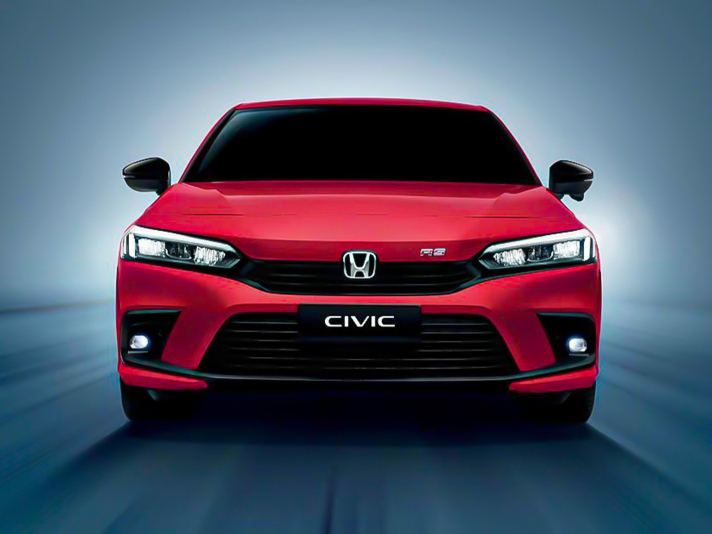
Honda Civic Interior Revealed: A Comprehensive Analysis of Civic’s Interior Charm
Kevin WongJul 10, 2025

Honda Civic Price Revealed: The Most Detailed Buying Guide!
AshleyApr 8, 2025

Whether it's about appearance or handling, why do young people all like Honda Civic?
WilliamSep 24, 2024
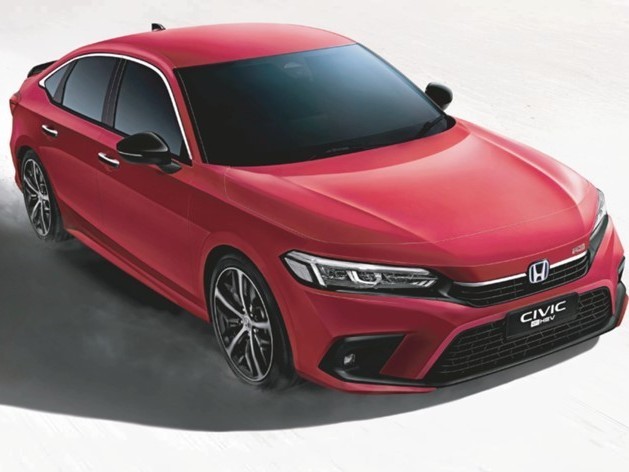
2022 Honda Civic: Hybrid car with the fastest acceleration, lowest fuel consumption, who says eco-friendly cannot be fast
JohnSep 3, 2024
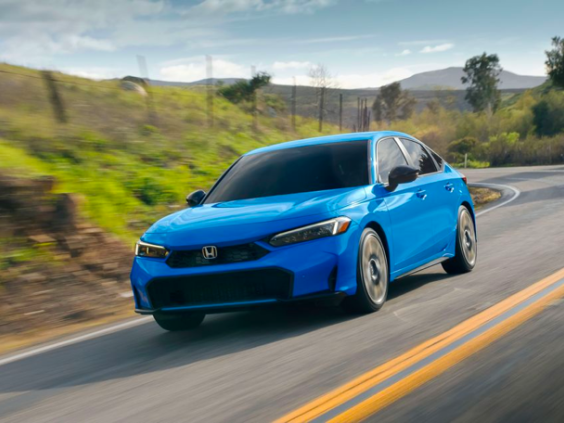
2025 Honda Civic debuts, minor changes in appearance, has 1.5 Turbo model been discontinued?
LienMay 22, 2024
View More


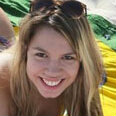
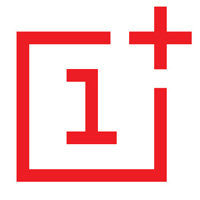









 Cars
Cars


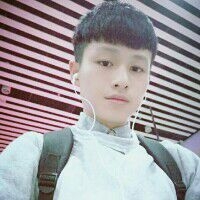

Pros
Cons